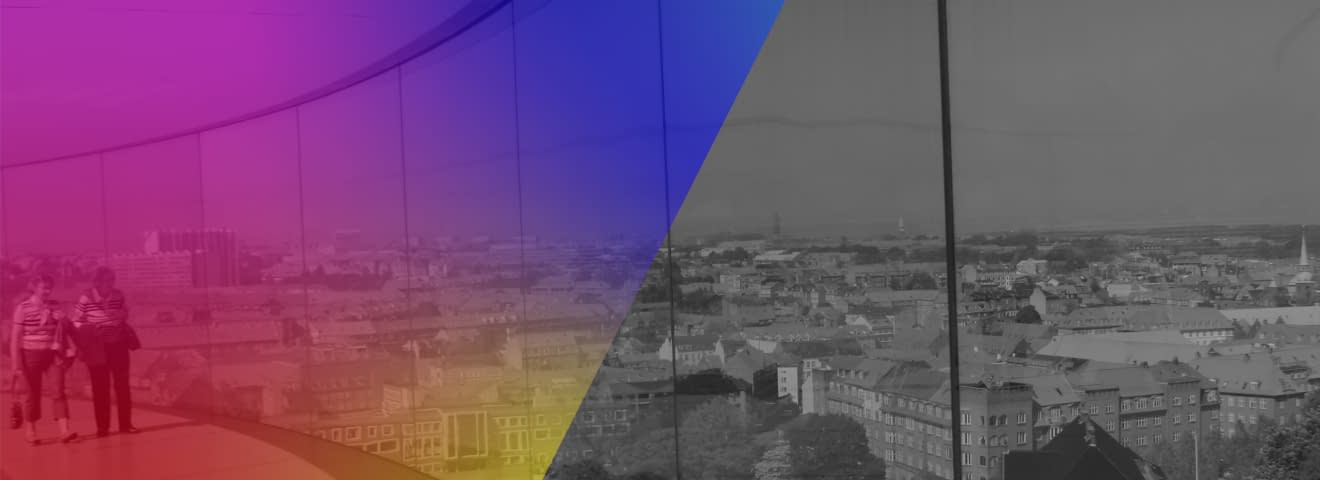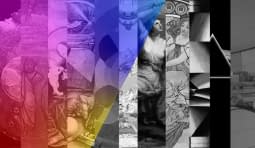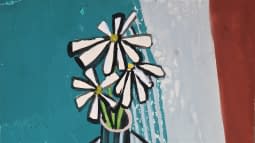Rainbow #11 - The Rainbow in the 21st Century: Immersion into the Rainbow
Glory and the Infinite
When we think of the rainbow, we automatically associate it with colour, light and reflection. Gerhard Richter dealt with these perceptual phenomena in his «Richter Window» (2007), which can be admired in the South Hall of Cologne Cathedral.
_800pix.jpg)
Fig. 1: Gerhard Richter, window in the south transept, mouth-blown genuine antique glass, 2300 x 900 cm, Cologne Cathedral, 2007. Photo: Wikipedia CC BY-SA 4.0.
In contrast to his painting «Rainbow» (original «Regenbogen», 1970, read more about it in blog #10), he addressed these themes in Cologne Cathedral less «representationally», but more «concretely» with the colour gradient and the local experience in the church, i. in other words, how the windows affect us in the context of the church interior. The window consists of 11,500 colour squares in 72 shades, which were arranged partly by chance and partly due to the architecture. Daylight shimmers through the glass squares and leaves fleeting reflections of the colour palette on the walls of the church interior. As a result, visitors are bathed in coloured patches of light that change as the day progresses. The window is based on Richter's work «4096 Colours» (original «4096 Farben», the final work in a series that the artist worked on from the 1960s until the 1970s. For this, he collected colour card paintings by various painters.
_800pix.jpg)
Fig. 2: Example of a Pantone colour chart, Photo: Wikipedia.
Consequently, he thought about colour as a commercial product, just as he did with cars, holidays and other motifs that he put on canvas. In his work «4096 Colours», he now isolated the colour that serves as the basis for painting. Colour is revealed as a serially produced product whose combinations in the series were initially subject to the principle of chance. Later, a mathematical calculation of the colour arrangement was added, which he also used in the final work «4096 Colours». Richter's art thus creates a tension between predictability, chance and mysticism. In the colour nuances and arrangements of the Richter window, we find not only a celebration of glory but also the infinity of possibilities. And thus also the impossibility of ever depicting this infinity of the spectrum of colours and combinations. In this boundlessness of colour description possibilities, in which there is so much hope, at the same time a meaninglessness is revealed. Do we recognise in this window a parallel to the principle of hope contained in the rainbow symbol and its spectral colours, which serve as the basis for all colours? It seems as if a form of faith and hope is needed for people, which Richter captures in this window. Can a Catholic place therefore also serve as a place of hope for everyone? Is this a feeling that characterises us humans? That we open ourselves up to something that seems possible?
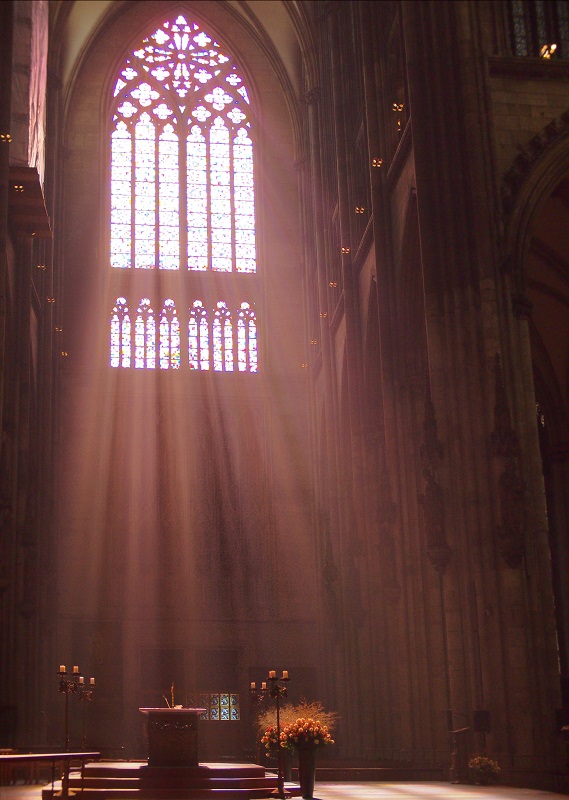
Fig. 3: Gerhard Richter, window in the south transept, mouth-blown genuine antique glass, 2300 x 900 cm, Cologne Cathedral, 2007, Photo: Wikipedia CC BY-SA 4.0.
The world of the inexhaustible is therefore not only reflected in pop culture, advertising and the serial production of goods, as we saw in blog no. 10, but is also discussed in faith and art. This is demonstrated by the various meanings that the inexhaustible can take on. In addition to the theme of serial production, Richter has also addressed issues of religion, awe and wonder in his window.
Walking on the Rainbow
And what if we are completely wrapped up by the rainbow and can «walk» on it? Is the impossible possible? We are given such an approximation of the rainbow through an architectural work by the Danish-Icelandic artist Ólafur Elíasson. For this art experience, we are travelling to Aarhus, Denmark, to the ARoS art museum. On the roof of the building is a permanent walk-in work by the artist, which consists of a 150 metre long and 3 metre wide glazed walkway. As you walk along it, the colour of the glass changes so that you pass through all the colours of the spectrum. «Your Rainbow Panorama» (2004) is the name of the work, realised by the architects Schmidt, Hammer & Lassen. Visitors are presented with a panoramic view of the city and the bay in all spectral colours. The respective light in the corridor is cast onto the floor and ceiling, so that people are completely covered by the light in which they are standing and become one with the rainbow. So while visitors float above the city, an intermediate space is occupied that brings the sky closer and at the same time enables a new perception and definition of space as well as inside and outside. As Elíasson himself describes, this also blurs the boundary between art and the building, expanding our senses and breaking out of the distinction we are so familiar with between architecture and nature (see press release 2011, A rainbow over Aarhus, Zumtobel 2011).
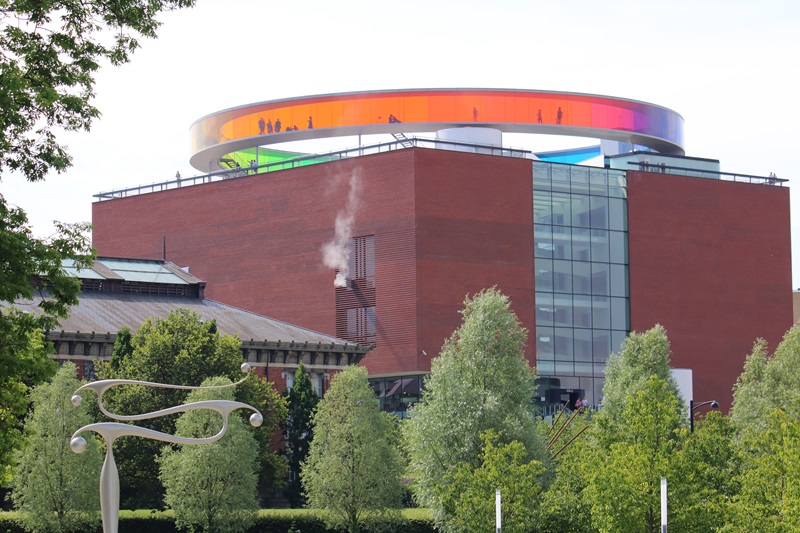
Fig. 4: ARoS art museum in Aarhus with the installation «Your Rainbow Panorama» by Ólafur Elíasson on the roof, built in 2004, Photo: Wikipedia CC BY-SA 4.0.
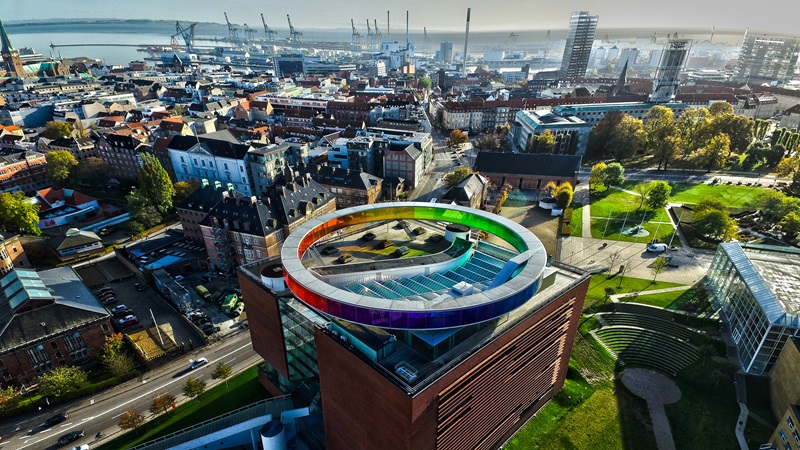
Fig. 5: ARoS art museum in Aarhus, aerial view of the installation «Your Rainbow Panorama» by Ólafur Elíasson, built in 2004, Photo: Wikipedia CC0.
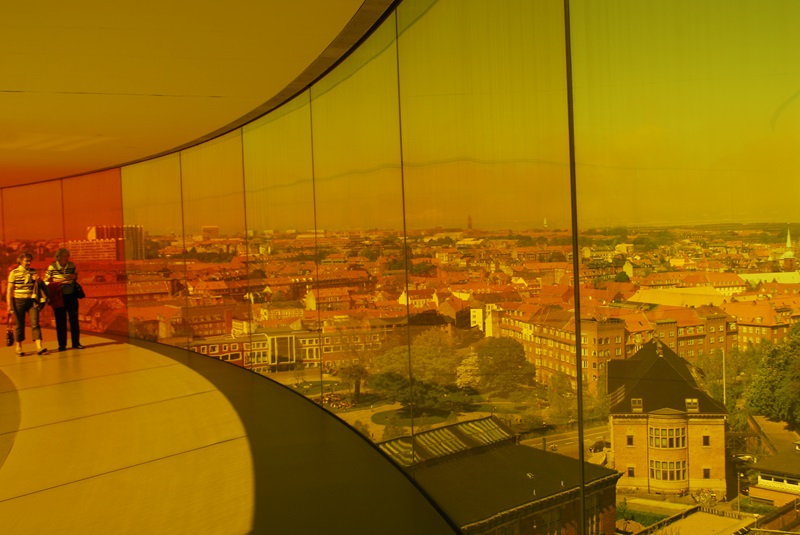
Fig. 6: ARoS art museum in Aarhus, view of the city from the installation «Your Rainbow Panorama» by Ólafur Elíasson, built in 2004, Photo: Wikipedia CC BY-SA 3.0.
Light and Life
Korean artist Kim Soo-ja creates spaces all over the world that transport us into breathtaking, atmospheric worlds. The rooms unfold their effect through the rainbow colours. Through her installations, she emphasises the given space, but turns it into something completely different from what we are used to in our everyday experience. She thematises breathing in and out within the emptiness of space, a function of the body that keeps us alive and allows us to exist in a permanent duality (see interview with Francesca Pasini). The artist uses light and mirrors to create her works. For example, light is cast onto scratched or transparent diffraction grating foil, which scatters it in the colours of the spectrum. As with Richter's window, the works are dependent on daylight, which means that the work looks different every day. In this way, the artist also relinquishes some of her control and creates an analogy to life here too. But she also challenges us to perceive and experience our relationship to ourselves, to others and to our surroundings. The rainbows are reflected infinitely through the mirrors, so that a room suddenly takes on a multitude of levels. Light and colours become connecting elements for people and lead to a moment of wonder. Through Kim Soo-ja's work, we can now perceive what is otherwise taken for granted every day. By making us aware of these basics in these spaces, she unfolds the beauty of the means by which we can experience the world. Light and colour are an essential part of our culture - art is conditioned by these elements.
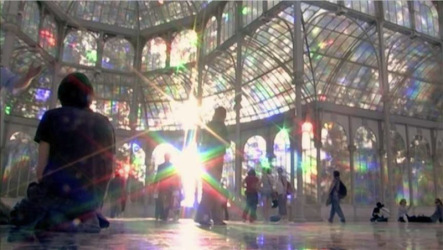
Fig. 7: Respirar - Una Mujer Espejo / To Breathe - A Mirror Woman, site-specific installation with diffraction grating film, mirror, The Weaving Factory, 2005 (sound performance by the artist) for the Palacio de Cristal in Madrid, 2006. Photo: CC BY-SA 3.0
Hope and Political Messages
Swiss artist Ugo Rondinone also repeatedly takes up the rainbow motif. Rondinone's works are visually captivating, but also harbour deep philosophical questions. One of his spatial installations from 2014, which - in contrast to Elíasson - was integrated within a building complex, was the work «Vocabulary of Solitude». The work was shown in 2021 in Auckland at the Art Gallery Toi o Tamaki. Glass windows were treated with colourful foils and clown sculptures were placed in the room. The clowns represent figures that stand out from the mainstream of society and are labelled as «fools», thus focusing on themes of inclusion and exclusion. Does the rainbow serve as a unifying element here, as a dream place where we can be fools and therefore escape the loneliness caused by such a stigma?
Besides his experiential work in Auckland, Rondinone created 17 different neon signs that glow in rainbow colours and were scattered around the world in site-specific outdoor areas. The curvature of the lettering is modelled after the rainbow and each «shouts» a statement out into the world. For example, «A Horse With No Name» (2002) on the roof of the Matthew Marks Gallery in New York, a reference to the successful 1972 hit by the band America, a song about how good it is to escape the rain and escape everyday life. This opens up a wide range of associations that are often socio-political in nature. This was also the case with the sign «Life Time» (2022) on the roof of the Schirn Kunsthalle in Frankfurt, which addressed the themes of time and transience. Rondinones works unfold feelings of melancholy and hope at the same time. The political and philosophical messages of the neon signs are conveyed by the rainbow. In the statements, therefore, nature, represented by the rainbow, merges with the melancholic statements and gives rise to something positive. Through the rainbow, Rondinone thus returns to nature as a place of power that gives us hope.
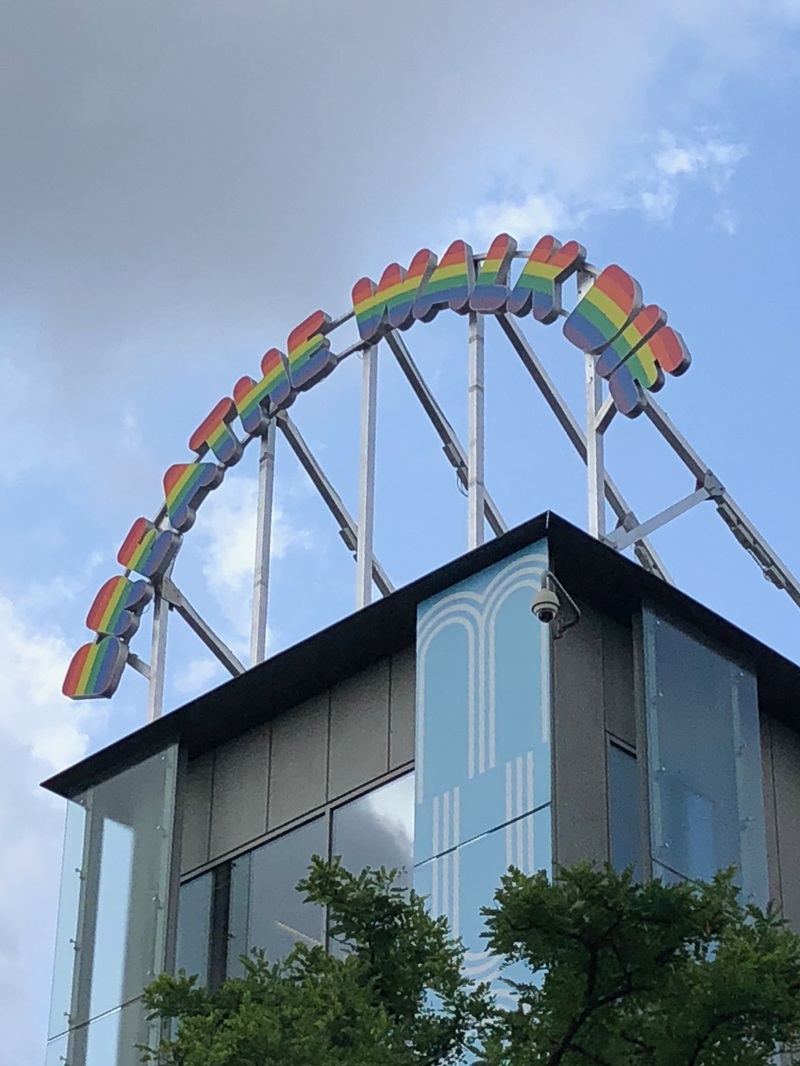
Image 8: Ugo Rondinone, Breathe, Walk, Die, installation made of aluminium, neon, Plexiglas, transparent film, Museum Boijmans Van Beuningen, Rotterdam, 2014, Photo: Wikipedia CC-BY-4-0.
Love, Peace and Empathy
So we see that the rainbow also incorporates questions of spirituality, strength and hope into contemporary art history. Artists deal with the fundamentals of the conditions of our world and thus automatically also with scientific aspects. After all, behind all these inspiring natural phenomena are astonishing processes that characterise our art and culture and have a miraculous effect for this reason alone. Hope as a unifying human experience that drives us forward and makes us open to all these possibilities is thus embodied by the rainbow, which in turn leaves its mark in infinite works of art and spreads love, peace and compassion.
So we end our rainbow journey in the present and hope you enjoyed reading and were able to learn a lot about the cultural history of the rainbow. The rainbow that makes us pause every time it appears - a true miracle and unique work of art of nature.
Further Reading
Shannon, Joshua, System: Gerhard Richter. The Recording Machine. New Haven: Yale University Press, 2020, S. 149–194.
Public Delivery, What are Kimsooja’s rainbow rooms all about? (latest update: 31. August 2023, What are Kimsooja’s rainbow rooms all about? (publicdelivery.org)).
AroS, Your Rainbow Panorama, Your rainbow panorama - ARoS.
Paula Pfoser, Gerhard Richters gebrochene Romantik, 30. September 2020. (BA Kunstforum: Gerhard Richters gebrochene Romantik - news.ORF.at).
